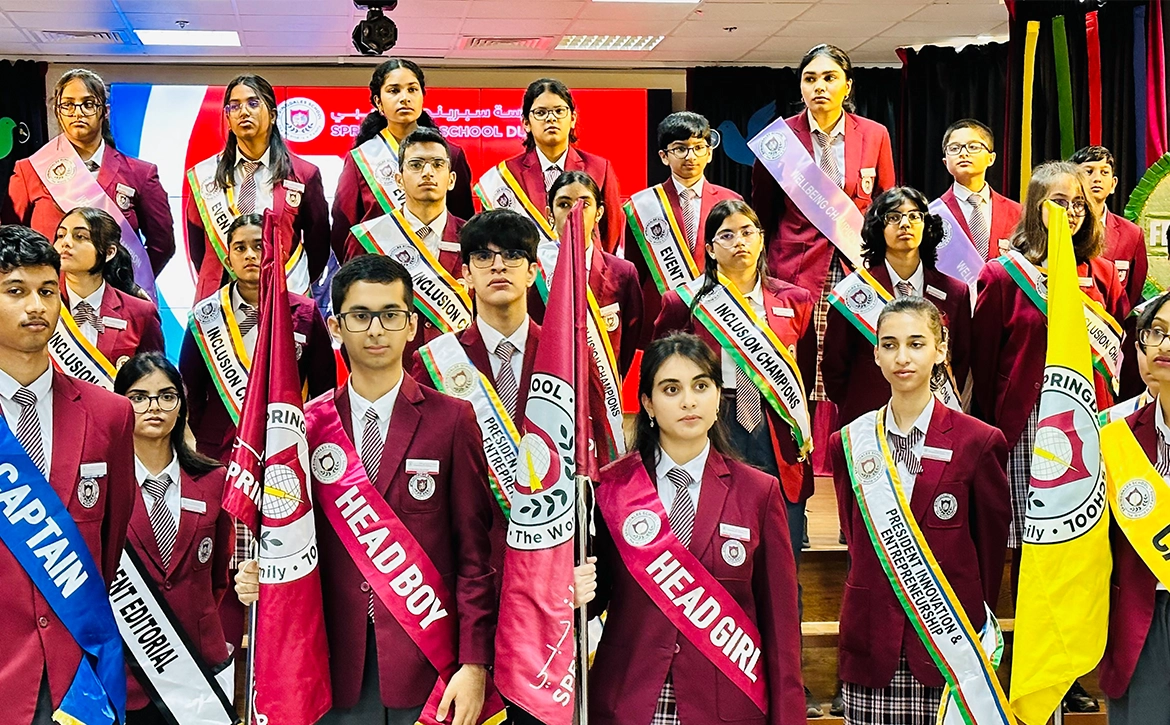Graduating from Springdales Dubai unlocks the world

In my time at Springdales, Dubai I have seen sixty-two graduates head across the globe to the universities of their choice as the next step to realising their life’s dreams and aspirations. Destinations such as Vancouver and Toronto, Canada; The Hague and Leeuwarden, Netherlands; Luzerne, Switzerland; Tbilisi, Georgia; 16 different universities here in the United Arab Emirates and top higher education institutions such as Vellore Institute of Technology, India to name a few. Click here to see the list
Truth be known our students have access to 260 university and institutions across Australia, United Kingdom, United States of America, Europe and South East Asia including top 100 universities such as the University of Melbourne, Cambridge University, Harvard, Stamford, Yale, Free University of Berlin and the National University of Singapore.
We have students studying careers in Engineering, Business, Psychology, Computer Science, Sports Management, Biotechnology, Media and Communication, Culinary Arts, Life Sciences, Biomedical Sciences and Hospitality Management. All from the graduating class of 2020.
Why tracking matters
Tracking the destination of graduating students will provide information for students in grade 11 that do not have a clear idea about what they intend to do post-16. As well as identifying those without intended destinations, it is also a chance for the school to ensure that the offers students do have are appropriate and realistic for those students.
The collection of actual destination data of year 12 leavers is a useful measure for our school to analyse the range of further and higher education and training opportunities taken up by the students and to assess the quality of careers guidance.
During the year we are also seeking information about any early leavers that do not finish their course. Again, this information is used to target support to encourage and assist young people back into learning.
How do international graduates from different countries compare?
International graduates from different countries often show different study patterns. For example, students from India tend to complete qualifications at certificate or diploma level, graduate certificate or diploma, or postgraduate level, whereas students from the Association of Southeast Asian Nations (ASEAN) countries are more likely to complete a bachelor’s degree. There are also differences in the preferred field of study.
The proportion of male and female graduates varies depending on the country that graduates come from. There is a high proportion of male Indian graduates at most qualification levels, whereas the proportions of male and female graduates are more equal for Chinese and ASEAN graduates.
Outcomes for international students vary depending on which country they come from. For example, Indian graduates are less likely to return overseas when they have completed their studies, and are more likely to stay in India or the country that they completed university and work, whereas graduates from ASEAN and Gulf Cooperation Council (GCC) countries are more likely to return to Asia or the Middle East according to a study done by the New Zealand Government in 2016.
So, why do destinations matter to students?
Senior students tell us, “The destination data is a good way to inform students about where their classmates are spending the next four years. It is also interesting to see which schools are the most popular.” The destination data also enables the following students to get the first-hand experience and have a sneak peek of the college process that their friends and classmates experienced. Middle school students say “In addition to being a way for seniors to share where they’re going to school, it’s a good source of information for grade 8,9 and 10 students to see what universities in what part of the world are popular.”
One student said, “for myself and my friends, seeing people we know getting into some of the best universities around the world makes aiming for a top school seem more achievable” Our senior teachers agree “the destination data gives all students a glimpse of the wide variety of options available to students, we hope the mature ones can look at it and say ‘All these kids are going to all these places’ and that they’ll be open to a wider range of universities and colleges than only a few that they were thinking about as their main options” At Springdales we encourage students to broaden their options initially and then surgically focus on specific options as they get closer to graduating.
Conclusion
Let’s be realistic, destinations being university-focused will likely remain the students and their family’s main priority. This is an area we have a strong focus at Springdales School, Dubai and it is our intention to become one of the schools that lead the destination conversation so as to provide an outstanding service to our Springdalians going forward.
Ultimately, for senior students specifically, destination data when handled well can offer closure to their endeavors and is a good way to celebrate what all of the senior students are doing in their next four years. It is a way to celebrate and inform others about where the graduates are going and provide inspiration to the next cohort of students.


